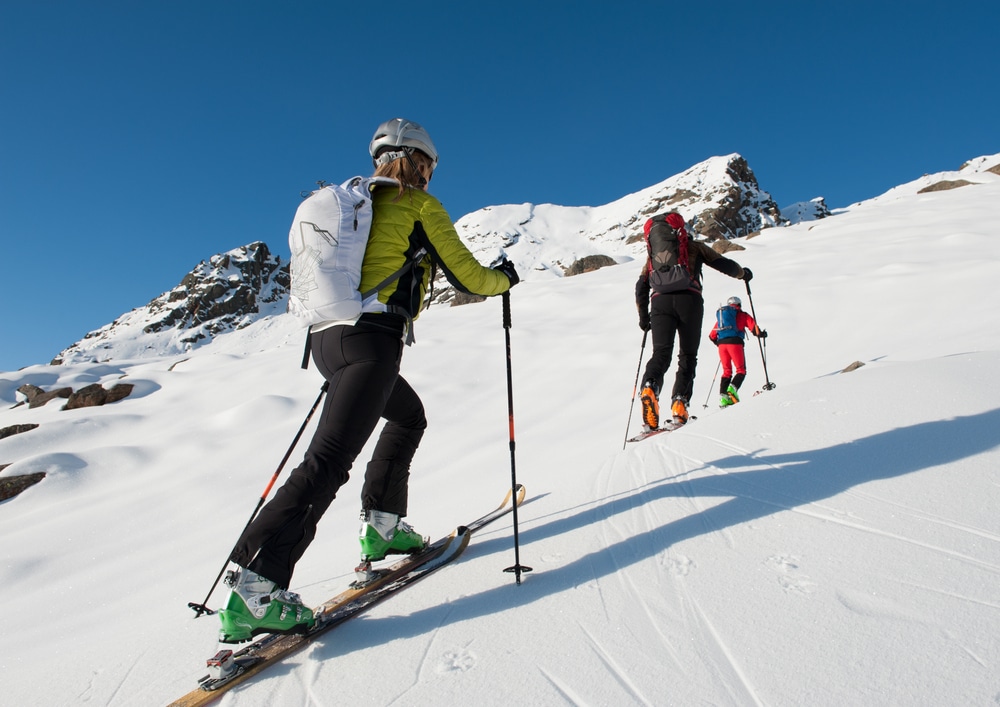Table of Contents
Experience the pristine beauty of snowy landscapes with a ski-touring approach that combines athleticism and wilderness exploration. Therefore, it is necessary to learn the tips and techniques of ski touring beforehand to enjoy the maximum beauty of natural terrains. Also, learning the technique of ski touring opens up a world of possibilities, whether peaceful backcountry solitude, fast descents, or deep powder adventures attract you.
This guide covers all you need to know for a successful ski touring experience, from navigating avalanche safety to understanding gear like tech bindings and alpine boots to selecting the appropriate ski waist width.
What is Ski Touring?
Ski touring, also known as alpine touring or backcountry skiing, is the practice of skiing in unmarked, natural terrain outside of ski areas. In contrast to common downhill skiing, which relies on maintained routes and lifts, ski touring enthusiasts use specialized equipment and their own strength to climb slopes. This typically includes lightweight skis, climbing skins, and boots that can transition between uphill and downhill modes. Ski touring gives skiers access to normally unreachable locations, virgin snow, and peaceful scenery.
Gear Essentials for Ski Touring
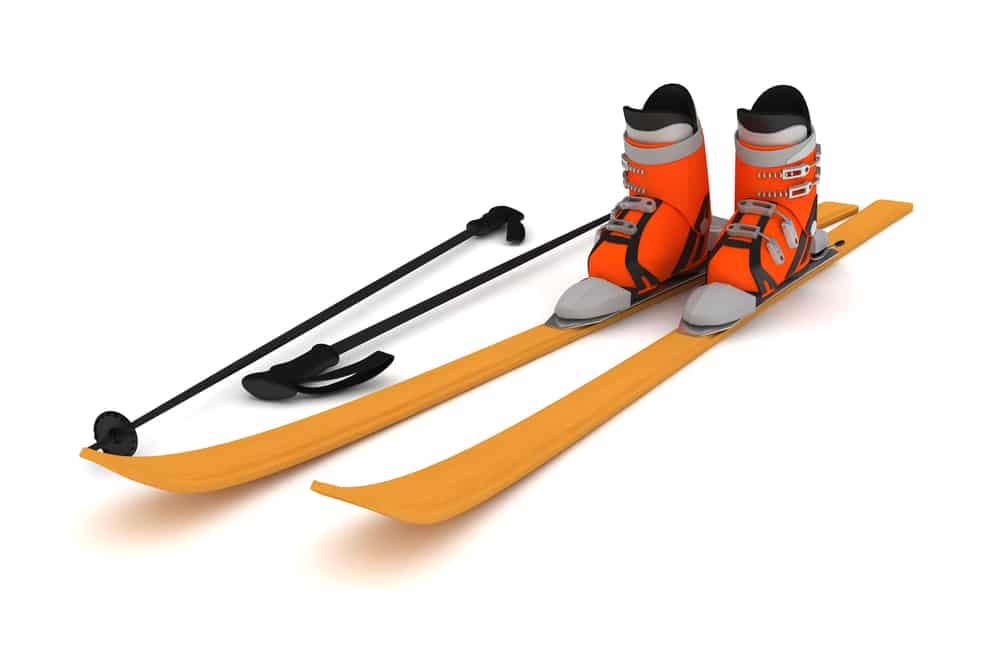
Skis and Bindings
Selecting the appropriate equipment is essential to ensure optimal performance and comfort while skiing. Also there is a similar kids ski touring gear to provide the children with maximum safety and comfort.
- Alpine touring (AT) skis are usually lighter than conventional downhill skis and have a narrower waist width (usually between 80 and 100 mm) that makes it simpler to climb hills while still being able to handle a variety of snow conditions.
- Tech bindings are popular because of their lightweight and effective design. They enable skiers to transition effortlessly between skiing and climbing on a slope.
Boots
Alpine touring boots are made to offer the flexibility and support required for climbing and downhill skiing. These boots have hiking and downhill skiing modes and a walk mode for comfort during extended trips without compromising performance on the slopes.
Avalanche Safety Gear
Safety is the primary concern when ski touring. Essential gear includes an avalanche transceiver (beacon), a shovel, and a probe. Before going into the backcountry, it is essential to receive the necessary training in using these instruments, which are vital for finding and rescuing friends in the event of an avalanche.
Ski Poles
Touring ski poles are usually adjustable to suit varying terrain and user preferences. They should be sufficiently robust and lightweight to offer stability on descents and assistance on climbs. A perfect ski pole size is a crucial component of a successful sky touring experience and it is a component that requires and maintenance due to damage caused by regular wear and tear.
Types of Ski Touring
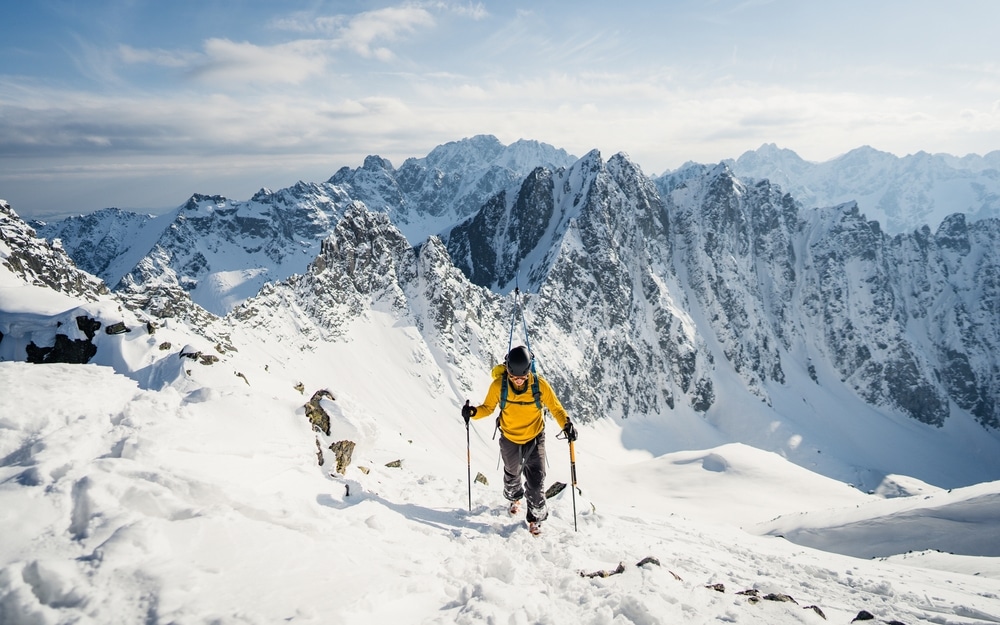
Backcountry Skiing
Backcountry skiing involves going off-piste, away from designated routes and ski areas. Although it provides freedom and adventure, the inherent risks of avalanches and unpredictable snow conditions require cautious planning and preparation.
Alpine Touring Skiing
Alpine touring combines Ski mountaineering and downhill skiing, sometimes referred to as randonnée skiing. Skiers use the climbing skins on their skis to ascend mountains and explore remote areas. They can then use the same equipment to descend.
Nordic Skiing
Nordic skiing encompasses cross-country skiing and ski touring on marked or untracked terrain. Fitness enthusiasts and those looking for a more peaceful winter experience favor it since it places a greater value on technique and endurance than downhill speed.
Techniques and Skills
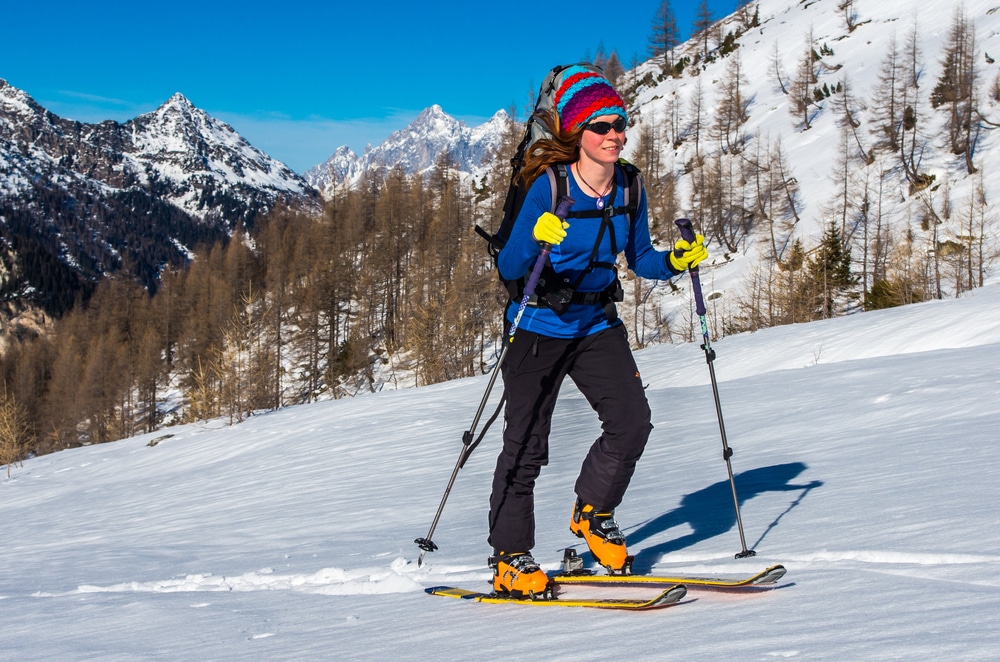
Skiing in Deep Powder
Mastering deep snow skiing demands technical modifications compared to skiing on groomed slopes. Wavy skis (waist widths of at least 100 mm) float better in powder, making turns smoother and descents more enjoyable.
High-Speed Descents
Skis with stable tips and tails are necessary for individuals looking for the rush of fast descents. These skis provide better stability and control at high speeds, making the descent safer and more thrilling.
Uphill Climbing
Effective uphill or ascending climbing can be done with the right tools and technique. Applying climbing skins to the base of your skis prevents them from slipping backward while ascending steep slopes. Consistent speed and lightweight equipment save energy for the descent.
Downhill Skiing
Descending in ski touring requires flexibility due to varying snow conditions. Skiers modify their technique according to the terrain to negotiate deep powder or variable snow, making broader turns and keeping a balanced stance.
Tips For Planning Your Adventure
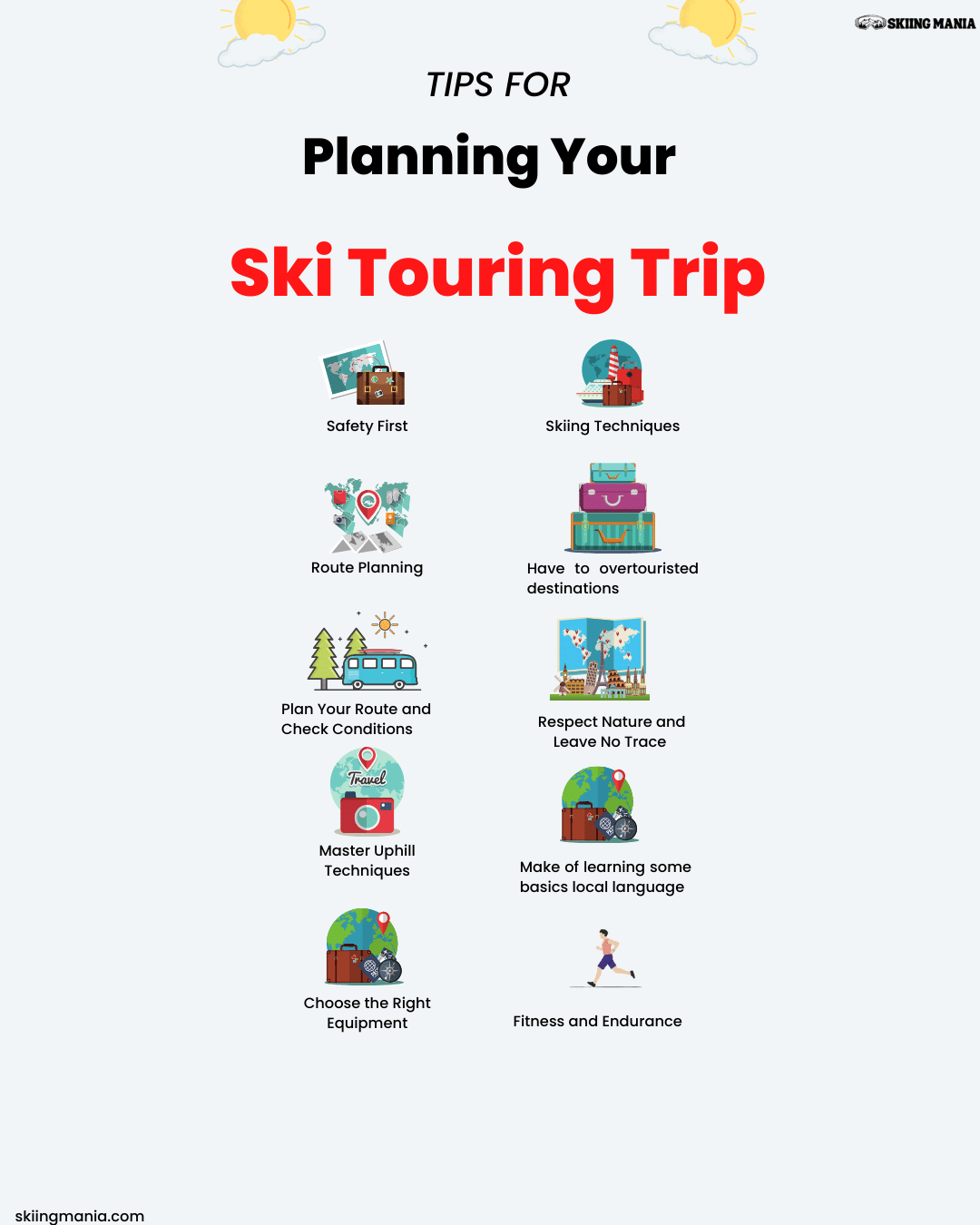
1.Route Planning
Route planning requires careful consideration of distance, topographical difficulty, and elevation increase. Knowledge of the location, including potential risks and emergency exits, is essential for safe and entertaining excursions.
2. Choose the Right Equipment
Opt for alpine touring (AT) skis if you want them to perform well both uphill and downhill. Choose a waist width appropriate for the terrain you intend to ski and your style of skiing. Invest in alpine touring boots that compromise stiffness and comfort. They should have a walk mode for uphill hikes and a ski mode for descents. Always carry essential avalanche safety gear, including a transceiver (beacon), shovel, and probe. Before venturing into the bush, be sure you understand how to utilize them properly.
3. Master Uphill Techniques
For added traction when descending steep slopes, put climbing skins on the base of your skis. Practice attaching and removing them efficiently to conserve energy. To effectively navigate switchbacks and steep terrain, get skilled at kick-turns. Using this method, you must pivot one ski while maintaining your balance on the other. Find a rhythm that works for your fitness level and keep your speed constant while conserving energy. Shorten your pace on tougher terrain to save energy.
4. Skiing Techniques for Downhill and Powder
Deep powder skiing demands a different style than skiing on groomed slopes. To stay atop the snow, maintain a balanced weight and make wider bends. Select skis with stable tips and tails for improved control at high speeds. To absorb shocks and keep stability, practice keeping your stance centered.
5. Plan Your Route and Check Conditions
Before leaving, check the local forecasts for weather and avalanches. Recognize the dangers associated with the topography and the state of the snowpack. Use maps and GPS devices to familiarize yourself with the area. When planning your route, carefully evaluate the elevation increase, potential hazards, and exit places.
6. Safety First
Groups of two or more people are safer when ski touring. Maintain eye contact and use effective communication. It includes having extra food and clothing, a first aid kit, and an emergency shelter on hand. Also, understand the area’s evacuation protocols and emergency contact numbers.
7. Fitness and Endurance
Strength and aerobic fitness are necessary for ski touring. To increase your stamina, go cross-country skiing, ski at nearby slopes, or hike with a pack. Drink plenty of water and eat wholesome snacks to sustain energy levels throughout extended travels.
8. Respect Nature and Leave No Trace
Honor natural environments and wildlife. Remove all trash and try not to agitate the surrounding plants or animals. Give way to hikers and skiers going uphill. Remember local laws and leave gates and fences as you find them.
Ski Touring Culture and Events
World Cup and Touring Races
The world of ski touring offers competitive challenges to individuals looking for them, such as alpine touring skiing competitions and the Tour de Ski. These competitions display some of the most breathtaking mountain scenery on earth while showcasing the athleticism and skills required for long-distance ski touring.
Ski Touring Community
Joining a ski touring community can provide valuable insights, fellowship, and safety tips. Ski-touring lovers of all skill levels can find scheduled trips, workshops, and social activities offered by numerous clubs and groups in their respective regions.
Conclusion
Ski touring is a fun-filled and exciting activity that blends the excitement of skiing downhill with exploring far-off places. Whether you’re attracted to the beauty of pristine snowfields or the thrilling rush of quick descents, learning the fundamentals of ski touring, like selecting the appropriate equipment, perfecting your technique, and putting safety first, will improve your experience and ensure unforgettable experiences. Ski touring provides an array of exciting opportunities to explore winter wonderlands worldwide, provided one has the right gear and a desire to explore.

